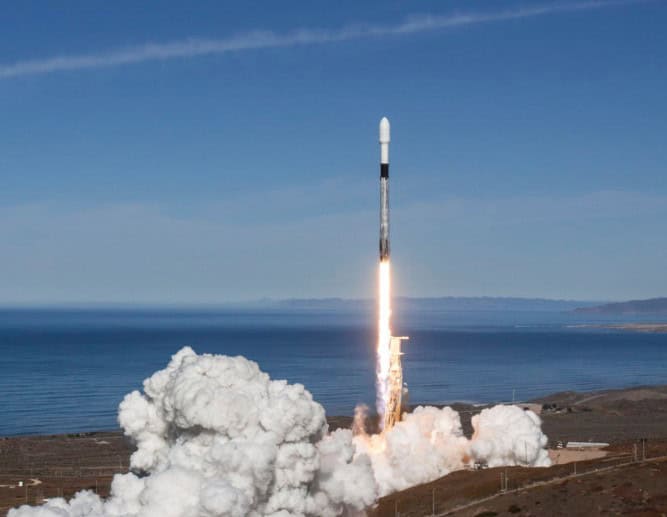
A Falcon 9 rocket’s first stage flew into space for the third time on Monday, and rare, clear skies at Vandenberg Air Force Base in California afforded a fine view of the booster.
This marked the first time an orbital rocket had ever taken off vertically, and landed vertically, for a third time. Moreover, with this 32nd landing of a first stage, SpaceX has now landed half of the Falcon 9 rockets it has ever launched. Quickly now, the company is delivering on its promise of reusable spaceflight with its new Block 5 variant of the Falcon 9 rocket.
The scorched nature of the first stage is striking in the images above, all the more so because of the pure black interstage, which contrasts with the pristine white upper stage and payload fairing at the top of the rocket. SpaceX has given up washing or re-painting its first stage rockets between flights, because it views such cosmetic changes as an unnecessary expenditure of time and expense. (The gritty rocket also reinforces the notion that SpaceX is a company that gets stuff done in the launch business).
Despite its appearance, the black interstage area—a composite structure that connects the first and second stages and houses the mechanism that releases and separates the two stages safely—is not painted. Rather, a new, proprietary thermal protection coating covers the interstage, and it does not require paint. This black material offers a contrast between the two stages and recalls the look of the company’s first rocket, the Falcon 1.
“Obviously, aesthetics are a minor factor in rocket design,” SpaceX founder Elon Musk said in May, during the maiden launch of the Block 5 variant of the Falcon 9 rocket. “But I still like the fact that we’ve returned for nostalgic reasons to having a black interstage.”
We do, too.
